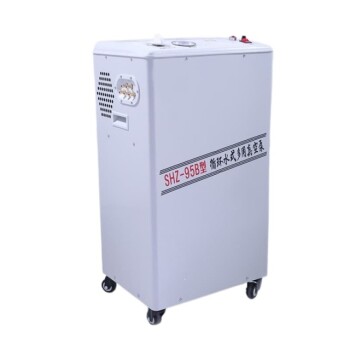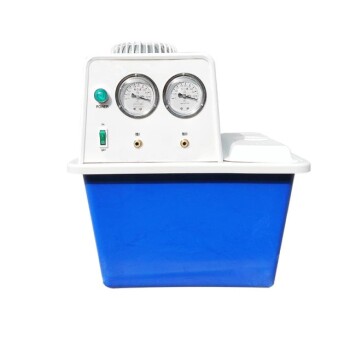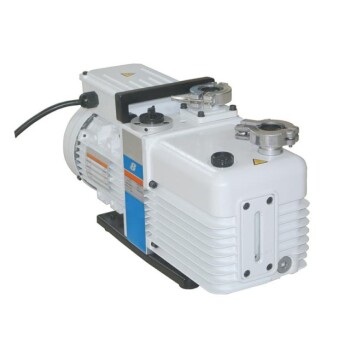Vacuum pumps are essential components in vacuum furnaces, including those used in vacuum muffle furnaces, as they create the necessary low-pressure environment for various industrial processes. There are several types of vacuum pumps, each suited for specific applications and pressure ranges. The main categories include positive displacement pumps, momentum transfer pumps, and entrapment pumps. Positive displacement pumps, such as rotary vane and diaphragm pumps, are commonly used for low to medium vacuum levels. Momentum transfer pumps, like turbomolecular and diffusion pumps, are ideal for high vacuum applications. Entrapment pumps, such as cryogenic and ion pumps, are used for ultra-high vacuum environments. Understanding these types helps in selecting the right pump for a vacuum furnace's requirements.
Key Points Explained:

-
Positive Displacement Pumps:
- These pumps work by trapping a volume of gas and then reducing its volume to compress the gas, which is then expelled.
- Rotary Vane Pumps: Widely used in vacuum furnaces for their reliability and ability to achieve medium vacuum levels. They are often used as backing pumps for higher vacuum systems.
- Diaphragm Pumps: Known for their oil-free operation, making them suitable for clean environments. They are typically used for low vacuum applications.
-
Momentum Transfer Pumps:
- These pumps use high-speed jets or rotating blades to transfer momentum to gas molecules, pushing them out of the system.
- Turbomolecular Pumps: Ideal for high vacuum applications, they are often used in conjunction with rotary vane pumps to achieve ultra-high vacuum levels.
- Diffusion Pumps: These pumps use a high-speed jet of vapor to direct gas molecules into the pump's exhaust. They are commonly used in high vacuum systems but require a backing pump.
-
Entrapment Pumps:
- These pumps capture gas molecules by condensing or adsorbing them onto a surface.
- Cryogenic Pumps: Use extremely low temperatures to condense gas molecules onto a cold surface. They are used in ultra-high vacuum applications, such as in semiconductor manufacturing.
- Ion Pumps: These pumps ionize gas molecules and then use an electric field to trap them. They are used in applications requiring a clean, oil-free vacuum.
-
Application in Vacuum Furnaces:
- The choice of vacuum pump depends on the required vacuum level and the specific application. For instance, a vacuum muffle furnace might use a combination of rotary vane and turbomolecular pumps to achieve the necessary vacuum for heat treatment processes.
- Proper maintenance of the vacuum pump and furnace components, such as door seals and heating elements, is crucial to ensure efficient operation and prevent issues like poor evacuation.
-
Considerations for Selection:
- Pressure Range: Ensure the pump can achieve the required vacuum level.
- Compatibility: The pump should be compatible with the furnace's operating conditions, such as temperature and chemical environment.
- Maintenance: Consider the ease of maintenance and the availability of spare parts.
Understanding the different types of vacuum pumps and their applications is crucial for optimizing the performance of vacuum furnaces, including those used in specialized processes like those in a vacuum muffle furnace.
Summary Table:
| Type of Vacuum Pump | Examples | Pressure Range | Applications |
|---|---|---|---|
| Positive Displacement Pumps | Rotary Vane, Diaphragm | Low to Medium Vacuum | General vacuum furnaces, clean environments |
| Momentum Transfer Pumps | Turbomolecular, Diffusion | High Vacuum | High vacuum systems, semiconductor manufacturing |
| Entrapment Pumps | Cryogenic, Ion | Ultra-High Vacuum | Ultra-high vacuum applications, oil-free environments |
Need help selecting the right vacuum pump for your furnace? Contact our experts today for personalized advice!







